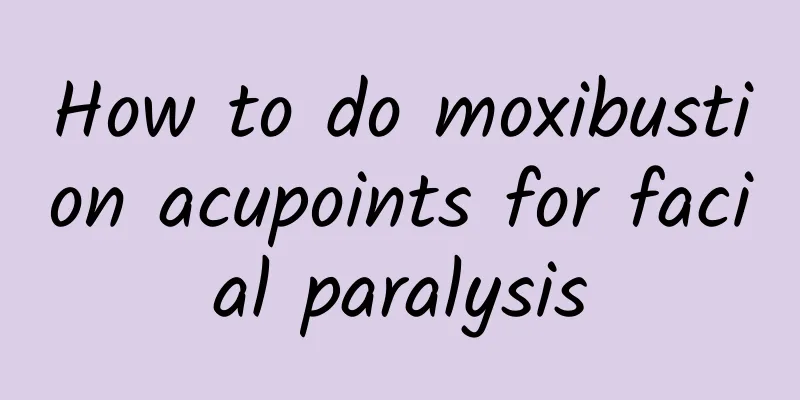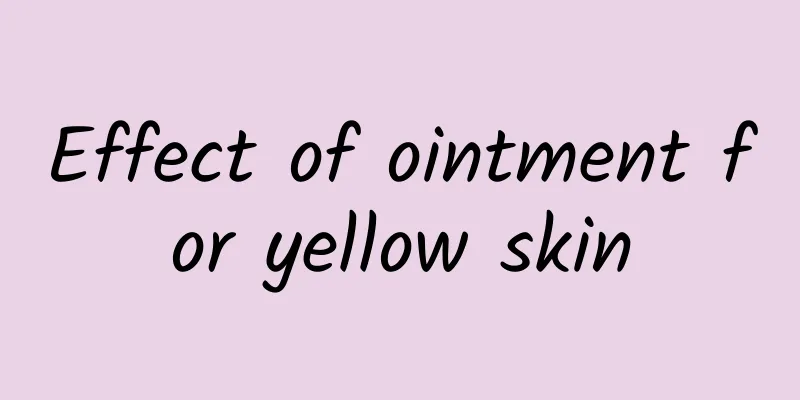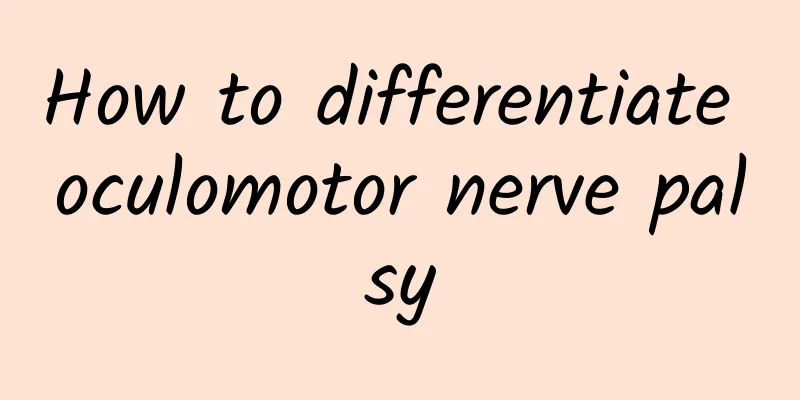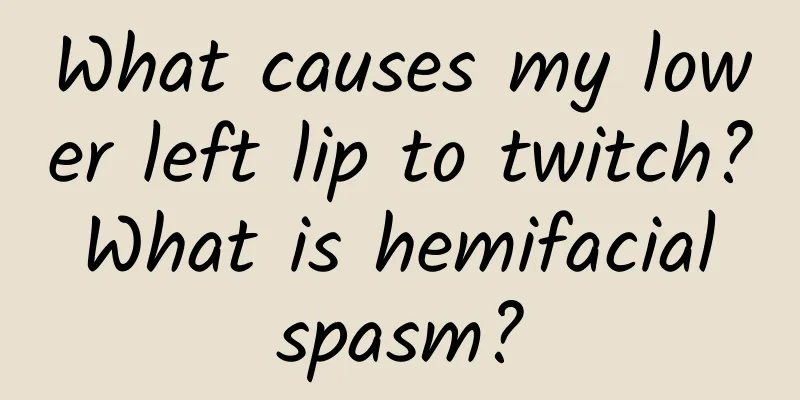How to do moxibustion acupoints for facial paralysis

|
The treatment for facial paralysis is a combination of traditional Chinese and Western medicine, and moxibustion is a better way to treat facial paralysis. We know that facial paralysis is caused by cold wind invading the meridians, and the focus of treatment is to expel the "wind" from the meridians. Let's take a look at the acupuncture points for facial paralysis. Yintang Point: Located on the forehead, at the intersection of the line between the two eyebrows and the anterior midline. Massaging the Yintang acupoint can have the effects of refreshing the mind, eliminating headaches, and unblocking blood circulation. Yangbai Point: Located on the face, directly above the pupil, about two centimeters away from the upper edge of the eyebrow. It is usually used with the temple, Jingming point, and Yuyao point to treat red, swollen and painful eyes, blurred vision, ptosis, etc. Temple: The temple is in front of the auricle, on both sides of the forehead, and above the extension line of the outer corner of the eye. In the depression behind the eyebrows. The main diseases treated by the Temple Yang Meridian are: headache, migraine, eye fatigue, toothache and other diseases. The temple is an important acupuncture point on the human head. In "Dharma's Secret Prescription", massaging this point is listed as a "rejuvenation method", believing that frequent use of this method can keep the brain youthful and return to youth. When people use their brains for a long time, they often feel heavy pressure or swelling in their temples, which is a sign of brain fatigue. At this time, the results of massage will be particularly obvious on the yang meridians. Massaging the temples can give the brain a benign stimulation, eliminate fatigue, stimulate substances, relieve pain and refresh the brain, while the yang meridians can continue to maintain concentration. Sibai Point: Located on the beautiful part of the human body, directly below the pupil, in the depression of the infraorbital foramen. When looking for this acupoint, you can first put the index fingers and middle fingers of both hands together, and place the acupoint close to both sides of the nose. The tip of the middle finger is located in the middle of the nose, which is half the length of the nose. The thumb supports the depression of the lower jaw, and then put down the middle finger. The place where the tip of the index finger points is the Sibai point. It is often used in combination with Yangbai point, Dicang point, Jiache point and Hegu point to treat facial paralysis; and with Zanzhu point to treat eyelid twitching. Yingxiang Point: Located on the human face, in the wrinkle about one centimeter away from the nose wing (next to the midpoint of the outer edge of the nose wing, in the nasolabial groove). The main diseases treated by this point are: rhinitis, nasal congestion, sinusitis of the yang meridian, runny nose, nasal disease, toothache, cold, etc. Pressing this point can relieve toothache and also has a laxative effect. Dicang Point: Located on the face of the human body, on the outside of the mouth and tongue, directly opposite the pupil. Cheek-Riding Point: The Cheek-Riding Point of the human body is located on the cheek, about 1 horizontal finger (middle finger) above and in front of the mandibular angle. When you taste, the masseter muscle bulges and press the depression. To treat facial paralysis, piercing the Dicang acupoint is usually performed. Chengjiang Point: Located on the human face, in the central depression of the chin-labial groove. Quanliao point: located directly below the outer canthus of the eye, in the depression at the lower edge of the zygomatic bone. It is mainly used to treat facial paralysis, eyelid twitching, red eyes, yellow eyes, toothache, facial nerve numbness, trigeminal neuralgia, etc. Insert the needle vertically at a depth of 0.3-0.5 cun, or insert the needle obliquely or along the skin at a depth of 0.5-1 cun. Yifeng point: at the base of the ear behind the earlobe, in the depression between the mastoid process of the temporal bone and the posterior edge of the mandibular ramus of the mandible. When treating facial paralysis, the needle can be inserted into the upper and lower parts in front of the mandible. Hegu point: The first horizontal line of the thumb joint of one hand is facing the edge of the thumb's mouth of the other hand. Bend the thumb and press it down. The point where the fingertip points is the Hegu point. Hegu point belongs to the hand yangming large intestine meridian. It is a very important and useful acupoint. It is usually effective for facial diseases, toothache, headache, fever, dry mouth, nosebleed, neck pain, sore throat and other diseases of the five senses. However, it should be noted that patients with poor physical constitution should not receive strong stimulation from acupuncture, and pregnant women should not massage the Hegu point in general. |
<<: How to use cupping to treat facial paralysis
>>: Can I eat breakfast if I have a sugar screen? What should I pay attention to?
Recommend
What are the symptoms of high blood sugar?
Patients should pay attention to high blood sugar...
How to deal with burns and broken skin
Accidental skin scalding is very common, especial...
A Chinese herbal medicine to suppress appetite
Nowadays, everyone wants to lose weight very much...
What is a lumbar puncture?
Lumbar puncture is a surgical procedure mainly us...
There is phlegm in the nasopharynx and it can only be sucked out
Due to factors such as getting angry or other inf...
Minimally invasive surgery for lumbar disc herniation
Surgical treatment of diseases is very common. Fo...
What should people with schizophrenia pay attention to in their daily lives? Nursing for schizophrenia
Nowadays, the pace of social life is getting fast...
How to treat lower limb artery blockage
As humans age, they will develop more and more ph...
How to treat acne caused by excessive stomach fire?
Excessive stomach fire can easily cause acne, whi...
Is it normal for a 5 month old baby to be sleepy?
It is normal for a father to be sleepy when his b...
How to remove the needle during infusion
Almost everyone has been to the hospital for an I...
The effect of red wine soaked onion
Red wine is an alcoholic beverage that people hav...
What to do if your baby is allergic?
The baby's physical constitution is relativel...
Bluish tip of the glans
Many modern people rarely exercise now because of...
How to do urethroscopy?
Urethrascopy is a method of examination used to d...









